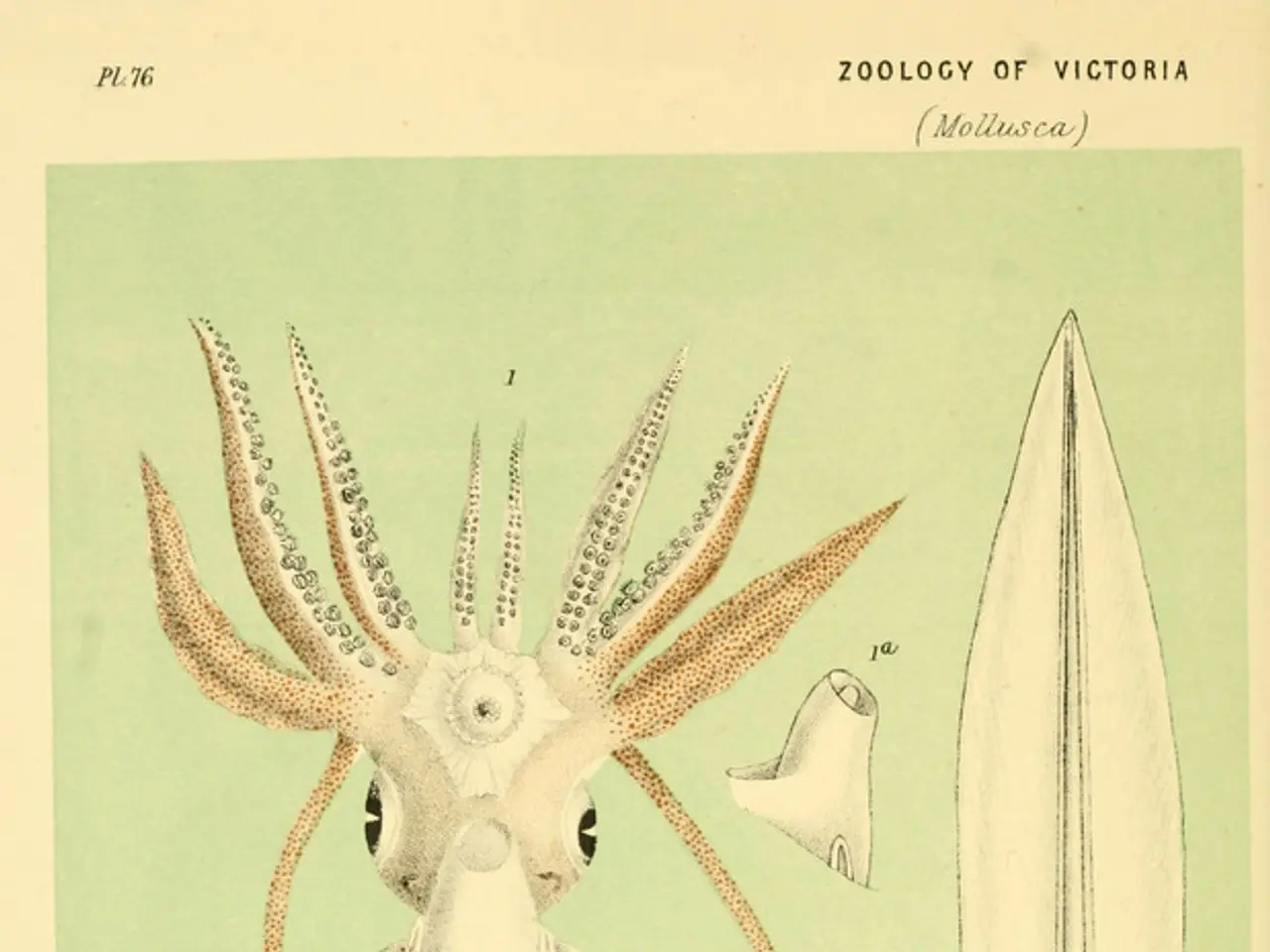Gargantuan Squids in a Battle of Size: Staggering Differences Abound in the Colossal Squid and Giant Squid Species
The Museum of New Zealand Te Papa Tongarewa (Te Papa) houses one of the largest colossal squid specimens ever recovered, offering a unique glimpse into the world of these elusive deep-sea creatures. This remarkable find is just the tip of the iceberg when it comes to understanding these fascinating cephalopods.
Recent expeditions by the Schmidt Ocean Institute have captured footage of colossal squid in their natural habitat, providing valuable insights into their behaviour and habitat. These creatures, with their arms adorned with two rows of tiny suckers and rotating hooks made of material akin to human fingernails, are a testament to the wonders of evolution and the adaptations necessary for life in the deep sea.
The study of colossal squid offers invaluable insights into the diversity of cephalopods and their role in ocean ecosystems. By examining their conservation status, total length, natural history, and adaptations, we can better understand the intricate balance of life in the deep sea.
One of the most fascinating aspects of colossal squid is their light organs, which may help camouflage them from large predators. These bioluminescent organs, found in various cephalopods, allow them to blend in with their surroundings and evade danger.
While the colossal squid is undoubtedly awe-inspiring, it is just one of many species of squid that inhabit our oceans. Giant squid and colossal squid remains are often identified through examining the stomach contents of predators, offering a glimpse into the lives of these elusive creatures.
Beyond the giant and colossal squid, the animal kingdom includes a multitude of other squid species. Each with their own unique characteristics and adaptations, these creatures play crucial roles in their respective ecosystems. The study of these species provides valuable insights into the diversity and resilience of life in the ocean.
This article was created in conjunction with AI technology, but fact-checked and edited by a website editor to ensure its accuracy and coherence. As our understanding of these magnificent creatures grows, so too does our appreciation for the wonders of the deep sea and the mysteries it holds.
Read also:
- Peptide YY (PYY): Exploring its Role in Appetite Suppression, Intestinal Health, and Cognitive Links
- Toddler Health: Rotavirus Signs, Origins, and Potential Complications
- Digestive issues and heart discomfort: Root causes and associated health conditions
- House Infernos: Deadly Hazards Surpassing the Flames








